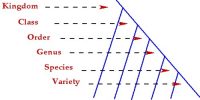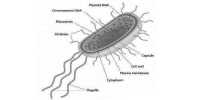Phylum Annelida are worm like animals. The body segments are rings externally. Internally the segments are seperated by septa. Externally the body is protected by a cuticle. Excretion and osmoregulation are acheived by ciliated tubules called nephridia. There is a central nervous system. The brain is formed of ganglia in the head region. The nerve cord is ventral in position. For the first time head formation or cephalization happens. These are bi-sexual and hermophroditic. The larva is called the trochophore.
This phylum includes three Classes, namely Polychaeta, Oligochaeta and Hirudinia. The polychaetes are marine worms. They have a distinct head. There are pairs of lateral projections called parapodia. The examples are Nereis (ragworms), Arenicola (lugworm).

Earthworms are included in the Class Oligochaeta. The Class: Hirudinia includes leeches. These are blood suckers and ectoparasites. They have well developed suckers for attachement at anterior and posterior ends.
Habit and habitat: Majority of the annelid animals live in temperate and tropical counties of the world. They show wide diversity in their structure, habit and habitats. Many live in fresh water, saline water. Some occur in moist soil, some members lives in seashore, some in bottom of shallow sea, some species live in grooves on stone and soil.
Identifying characters:
- Body metamerically segmented, body covered with thin cuticle.
- Ciliated, glandular, coiled tubules named nephridium acts as excretory organ.
- Generally setae are used as accessory organ for locomotion.
Example: Pherettma posthuma (Earthworm), Tubifex (Live in fresh water. used as food of aquarium fish Hirudo madiclnalls (leech).

Fig: Leech











